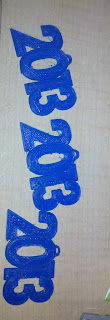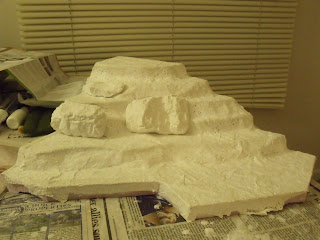So I finally have a update! It involves my background in farming and my education in Engineering. I have been working hard at developing some much needed supports for our container garden. We live on the third floor of a building on top of a big hill, this means tons of wind. We wanted to grow some veggies this summer and the best option we had was some container gardening. The only problem, the wind out on the deck. I decided that I wanted to make some kind of support for the plants.
The second problem was, if I tied them directly to the pole it would limit the plants movement in the wind so much it could make it brittle (first zip tied plants directly to pole but eventually the plants broke). By allowing it a little freedom to move around they seem to be doing much better.
These little things are what I came up with.
These legs slide down onto a wooden rod stuck into the pots. They are fully configurable, 1 leg (not shown), 2 legs (not shown), 3 legs, 4 legs, 1 slot deep (not shown), 2 deep, and they all accept extension arms. There are holes that allow for zip ties to go through to attach the extensions, attach a clamp (shown above 4 arm) and to attack the plant in the large semi circles without crimping the stem of the plant.
This shows a 4 leg (development version not finals seen in previous) holding up the stems of some young cucumber plants. There is a small hole in the side of the part with a screw to tighten it against the pole at the height desired.
In this picture it shows 3 young tomato plant. You can also see an extension arm added to reach out to the one plant a little too far away.
This picture is a little dark because I still have to keep this plant inside. These are some beans that grow very rapidly and damage easily in the high winds out on the deck. I have two of the 3 short legged arms and one normal 3 leg with extensions to spread the leaves out better for more sunlight in the window.
Overall I couldn't be much happier with the way these turned out. Very easy to print parts, longest one taking 1 hour, and highly configurable.
When printing I use a "Brim" to prevent the long skinny legs from curling up. The "Brim" technique takes the normal purge loops and puts them up tight to the part. This additional surface area helps the part stay stuck to the beg the entire print.



















































